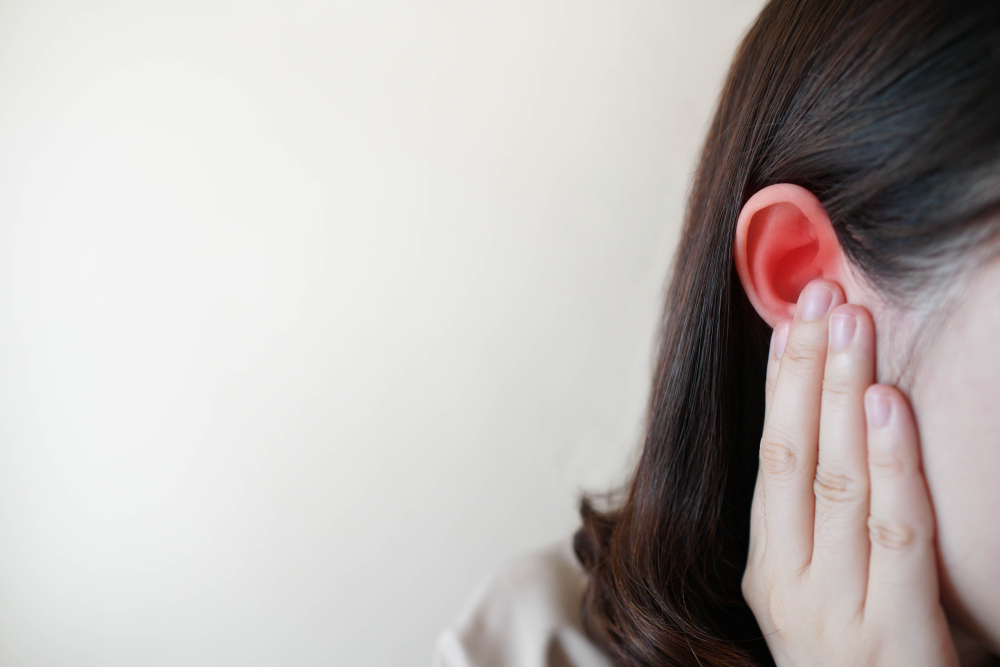The organ that allows us to enjoy music and listen actually enables hearing and helps us with balance. This article will discuss 5 common ear conditions, we should get to know.
There are three major parts of our ears:
1. The external ear, consists of
- The pinna/auricle, which is the visible portion of the ear; collects sound waves
- The external auditory canal is a short tube that funnels these sound waves to the tympanic membrane (eardrum)
2. The middle ear consists of
- Tympanic membrane – sound waves cause this to vibrate; vibrations are transmitted and amplified through the
- Auditory ossicles – these are 3 tiny bones (malleus, incus, stapes) which conduct the vibrations to the spiral-shaped cochlea
- Eustachian tube – drains fluid from the middle ear into the throat behind the nose.
3. The inner ear, consisting of
- The cochlea transforms vibrations into electrical signals, that are carried by the Auditory nerve to the brain; these are responsible for hearing
- Labyrinth (fluid-filled semicircular canals) and Vestibular nerve, which send head position information to the brain; these are responsible for the balance

Swimmer’s ear
Also known as otitis externa, is inflammation or infection of the external ear canal. It is mostly due to infection by bacteria or fungus through prolonged exposure to (dirty) water; other possible causes include allergic reactions to shampoo or ear plugs. Approximately 10% of the general population will develop this condition once in their lifetime, with humidity, narrow external ear canals, trauma (especially from overzealous cleaning with cotton buds) and radiotherapy being some major risk factors.
Common symptoms include pain and itch in the ear, feeling of fullness or popping sensation when you move your jaw, reduced hearing, red and swollen ear canal, and clear watery discharge or pus from the ear.
Topical antibiotics, pain relief and steroids can be prescribed by doctors, and most patients fully recover within 7 to 10 days. However, if the infection spreads and perforates the tympanic membrane, the middle ear infection results in a complication.
Infections of the Middle Ear
Also known as otitis media, most commonly seen in children between the ages of 6 to 24 months. Similar to otitis externa, it is usually an infection caused by bacteria or viruses. Bacterial pathogens Streptococcus pneumonia, Haemophilus influenza, and Moraxella catarrhalis are responsible for more than 95% of cases. Common viral pathogens include respiratory syncytial virus and influenza virus. Interestingly, most infections in this area come from a preceding respiratory tract infection. The bacteria or virus in the respiratory tract spreads through the nose, nasopharynx, middle ear mucosa and Eustachian tube.
Symptoms of otitis media are similar to that of otitis externa but could be more severe. Fever, trouble sleeping, and loss of balance are commonly seen in the paediatric population.
Oral antibiotics and pain relief medications usually commence immediately following a diagnosis to avoid complications. Most patients recover within a week following appropriate treatment.
If untreated, complications include hearing loss, chronic inflammation, mastoiditis (infection of mastoid bone in the skull next to the ear) and even facial paralysis. To read more on middle ear infections, click here.
Ear wax impaction
The ear canal is exposed to the outside environment. It cleans itself with a waxy secretion called cerumen. It is lubricating and has antibacterial properties, migrating itself towards the outside to clean the ear canal. Sometimes the wax builds up and causes a blockage of the ear canal; this is often from cleaning the ear canal with cotton swabs which pushes the wax deeper and may cause injury.
Cerumen impaction causes reduced hearing, earache, a sensation of fullness inside the ear, and even dizziness. You may go to your local pharmacy and ask for some wax-softening drops. Usually, the wax dissolves and comes out after a few days of treatment. If symptoms are persistent, see a doctor.
Tinnitus
Tinnitus is when you hear ringing or other noises (e.g. buzzing, roaring, clicking, hissing or humming) without an apparent external source, in one or both ears. Most of us might have experienced it once or twice in the past. Tinnitus is a symptom rather than a disease.
Previous trauma from loud noise is a common cause, and metabolic diseases involving the cardiovascular system or diabetes are associated with the onset of tinnitus as well. Meanwhile, ototoxic medications such as antibiotics or aspirin also lead to tinnitus.
Most tinnitus does not require treatment unless there is an identifiable underlying cause. Stress reduction and cognitive therapy could be of help. Consult a local doctor or audiologist for more information.
Meniere’s disease
Meniere’s disease is an inner ear disorder characterized by tinnitus, hearing loss, vertigo (the sensation that the environment is spinning), dizziness and sometimes vomiting. It usually causes significant discomfort and patients have to lie down till symptoms resolve.
Research has shown that it could be due to the accumulation of fluid in the inner ear. The exact cause is unknown but some risk factors include improper fluid drainage due to blockage or structural abnormality, autoimmune disorders, viral infection, head injury or genetic predisposition.
A low salt diet has been suggested to be helpful to reduce symptoms. Treatment options include anti-nausea or motion sickness oral medications e.g. prochlorperazine, steroid or antibiotic injections to the middle ear, and surgery (e.g. cutting the vestibular nerve to correct vertigo while preserving hearing in the affected ear) for cases of refractory to all other therapy.












